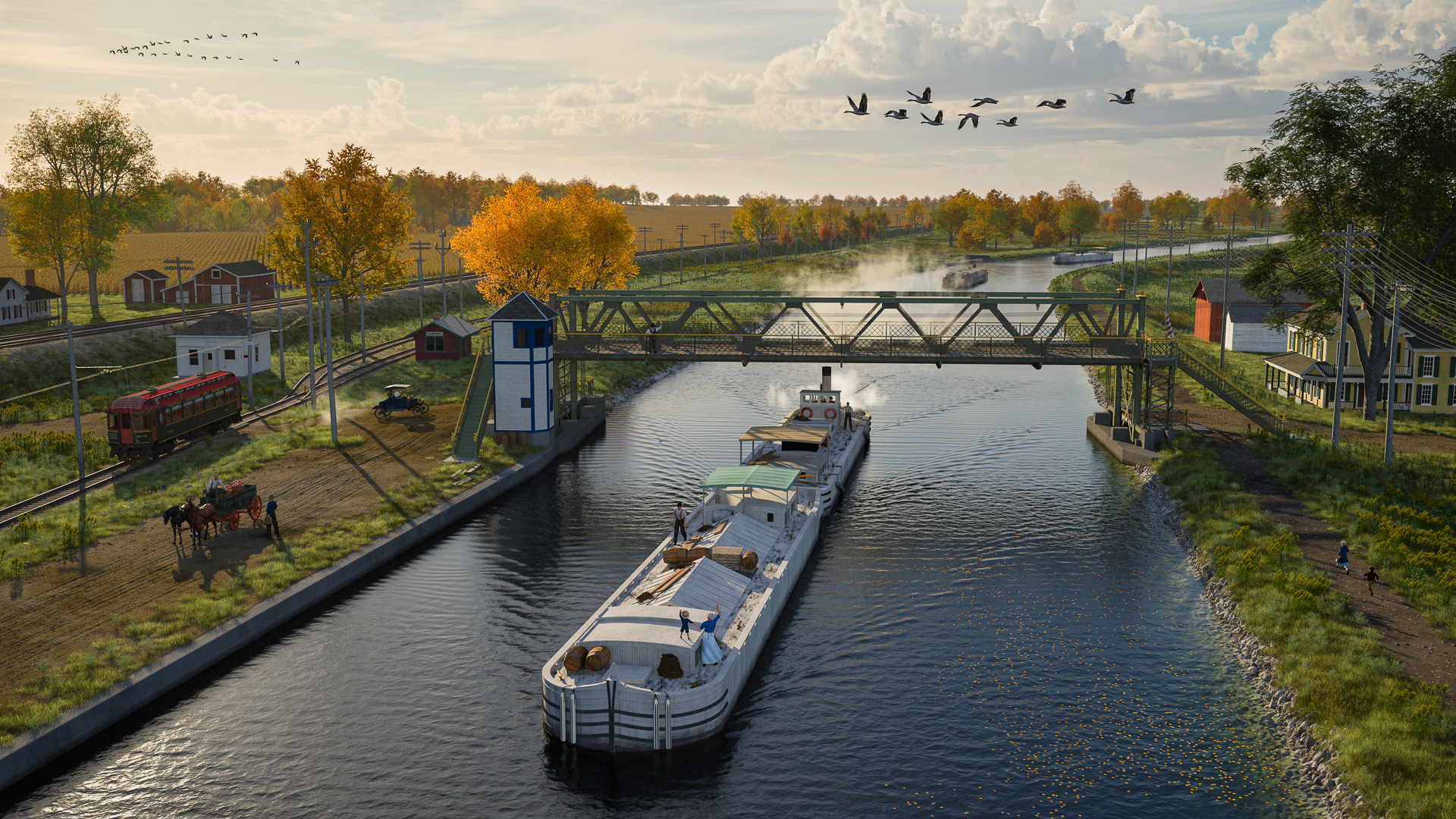Five years after its founding, the struggling settlement at the Falls of the Genesee remained a motley arrangement of muddy tracks, tree stumps, and free-range pigs. Even so, this first artistic rendering of the Hundred Acre Tract — made in 1816 by French naturalist Charles Alexandre Lesueur and wryly titled “City on Genesee River at the Fall” — hints at the growth and prosperity soon to come. The view looks southeast from today’s Four Corners in downtown Rochester. The track running diagonally from left to right, grandly named Buffalo Street, is today’s West Main Street. The large building at the left is the original Red Mill built by Hervey Ely and his partners in 1814. A smaller building, drawn across the page gutter, may be the sawmill built by John C. Rochester and Harvey Montgomery in 1815. One of the cascades of the Upper Falls can be seen immediately to its left. (Charles Alexandre Lesueur, “Ville sur Genesee River à la fall,” Rochester, New York. Pencil — 40 x 13 cm. Muséum d’histoire naturelle, Le Havre, inv. no. 39059v + 39060.)


